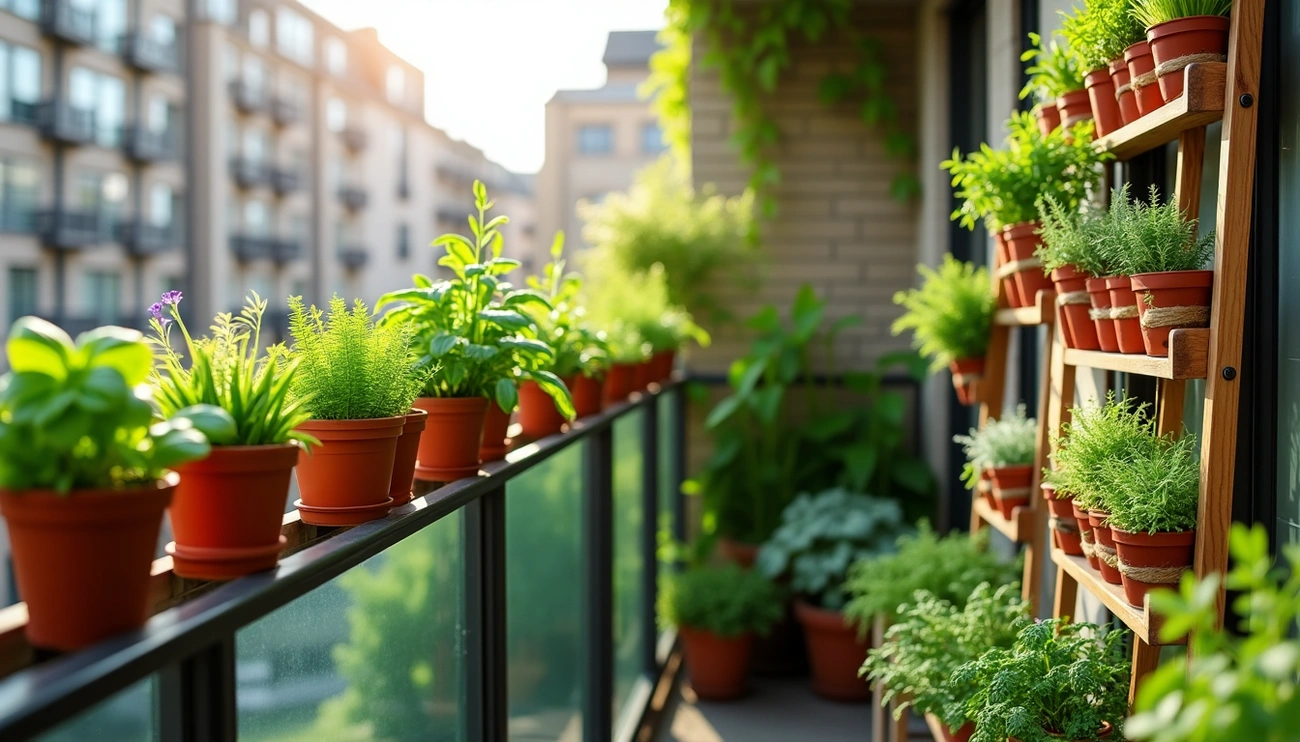Save this article for later
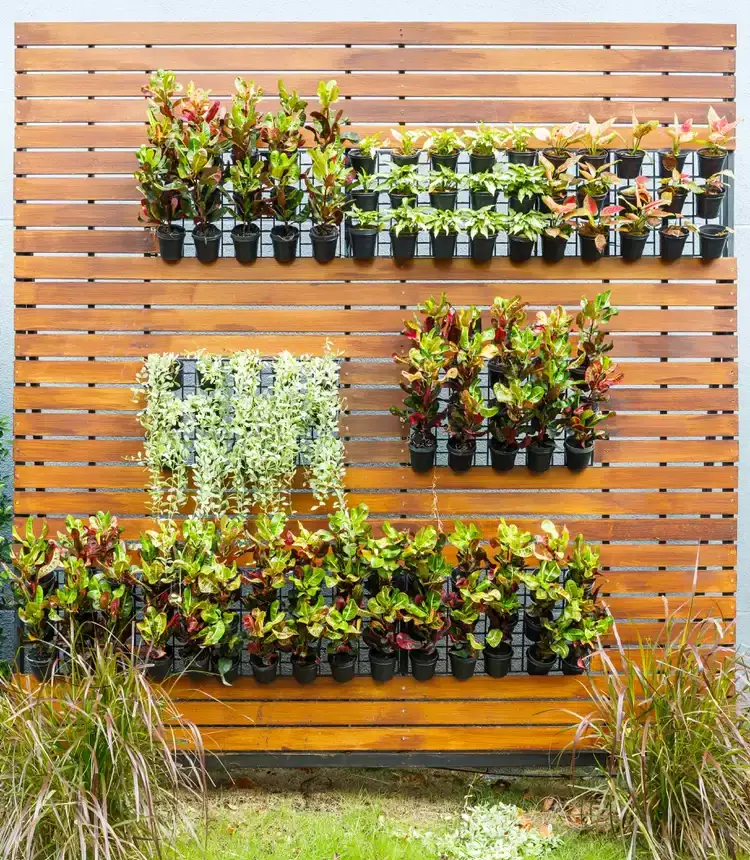
Getty Images/smuay
NASA research shows plants filter toxins and improve air quality naturally. Your balcony's herb garden offers more than fresh ingredients - it serves as a health boost right outside your door.
A thriving herb garden fits perfectly in a tiny space. Balcony herbs need minimal care and thrive year-round once they take root. Your limited square footage opens up possibilities through vertical gardening. Many gardeners have found expandable solutions that work well with various herbs in balcony settings.
Fresh herbs don't demand a big yard. Creative ideas like wall planters, jars, and stacked containers can turn your small outdoor space into a productive mini-garden. Herbs such as basil, thyme, rosemary, and mint boost your cooking flavors. These plants also lift your mood with oxygen-rich air and pleasant scents.
This piece shows you how to create a lush herb paradise on your balcony. Your space constraints won't matter - beauty and function come together naturally.
Creative Balcony Herb Garden Ideas for Tiny Apartments
A garden must combine the poetic and the mysterious with a feeling of serenity and joy." — Luis Barragan, Renowned Mexican architect and engineer
Space comes at a premium in apartment living. Small balconies can surprise you with their potential for herb gardens if you think upward. Your tiny green space opens up to creative possibilities beyond traditional floor pots.
Leverage a Railing for Hanging Planters
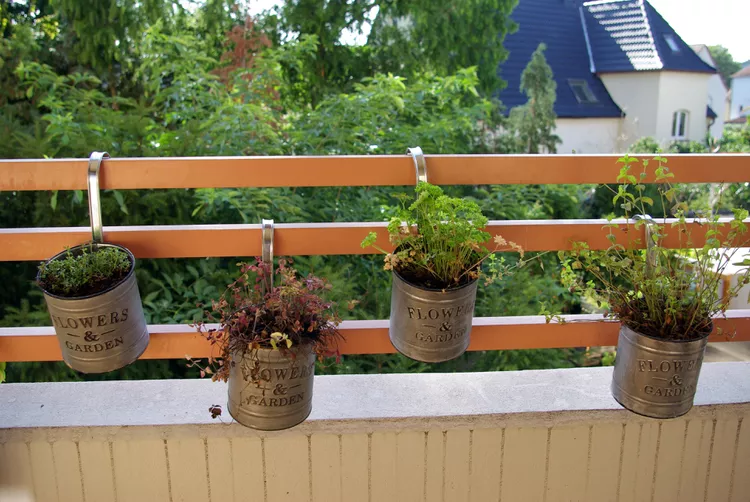
Getty Images/Juergen Schott
Your balcony railing becomes prime real estate for growing herbs if floor space runs short. Rail planters that attach to your balcony edge help you grow herbs without losing walking space. These planters are available in different styles - from rectangular boxes to individual hanging pots that clip onto railings.
Using Jars or Hanging Pots
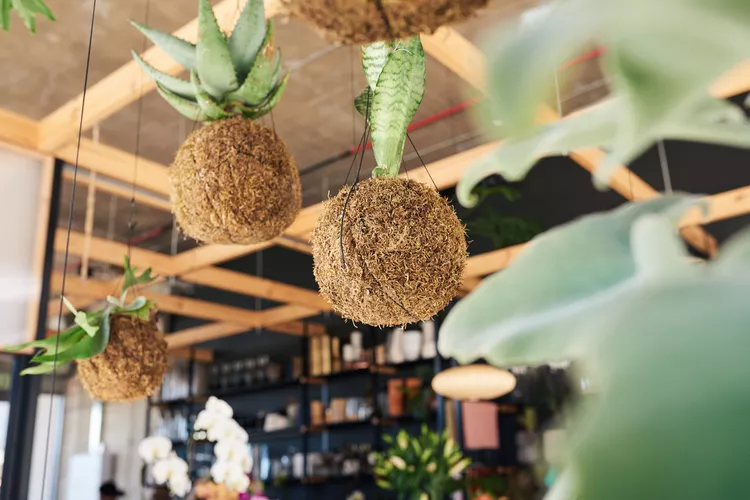
Mavocado / Getty Images
You can create a rustic look with DIY hanging planters using natural sisal rope and cedar boards. This combo looks charming and holds up well outdoors. Make sure to pull the rope tight to keep your herbs secure on windy days.
The edges of your balcony offer strategic spots to position herbs - areas you probably won't use anyway. Long rectangular planters make better use of this edge space than round pots.
Incorporating a balcony plant wall
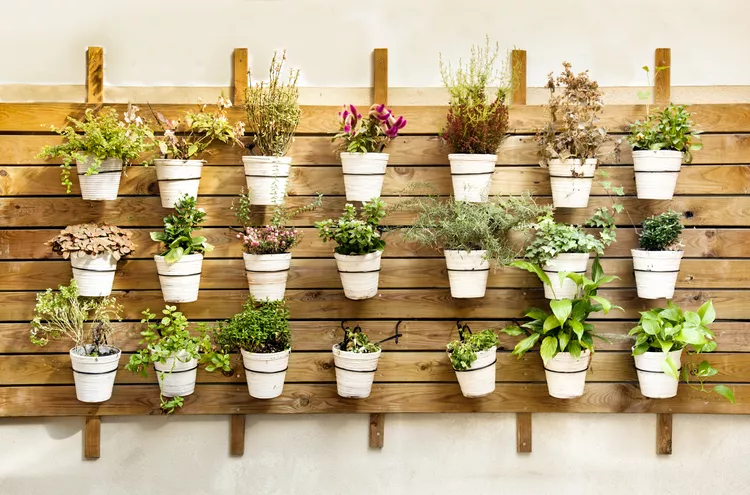
Source: Getty Images/Maica
Your vertical garden walls can feature multiple pockets. Options range from 6-pocket systems to large 36-pocket planters that turn a plain wall into a vibrant herb display. Mount these systems firmly to your balcony wall with proper fixings or brackets to get the best results.
These vertical gardens save space and fill your balcony with pleasant scents. Many people enjoy these aromas while relaxing outdoors or letting fresh air inside through their balcony doors.
Repurposing shelves and ladders for herbs
Old furniture pieces make excellent vertical herb growing stations. Ladder-style structures work great on balconies. They create tiered growing spaces that use vertical area efficiently while keeping herbs within reach.

Source: Unsplash
An old CD rack turns into a perfect herb garden with minimal changes. A coat of exterior paint weatherproofs it nicely. You can group herbs by their watering needs - putting the thirsty ones closest to your balcony door. This setup makes maintenance easier in your compact space.
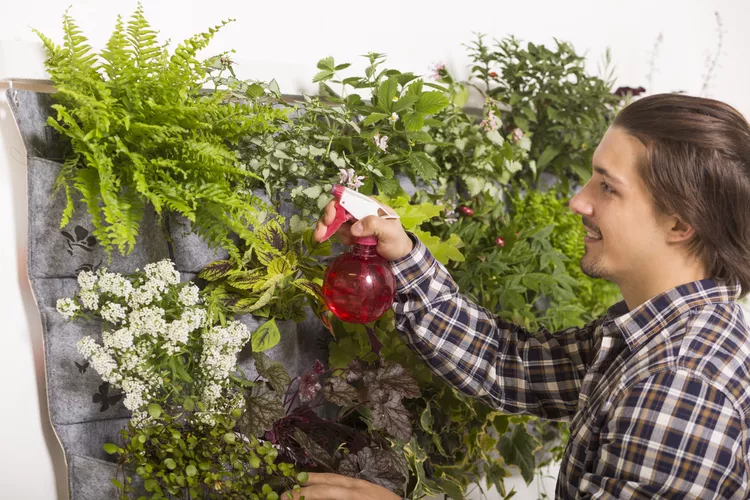
tomazl / Getty Images
Over-the-door canvas shoe organizers make great DIY hanging planters. Before planting, ensure that the inside of the canvas pockets are lined with plastic so that water does not seep through the canvas into the wall behind it.
Plant bookshelves bring greenery and texture while making good use of vertical space. You can customize them by adjusting shelf heights or widths to match your balcony's size. Pick pots that match your shelf design and fit properly on the shelves.
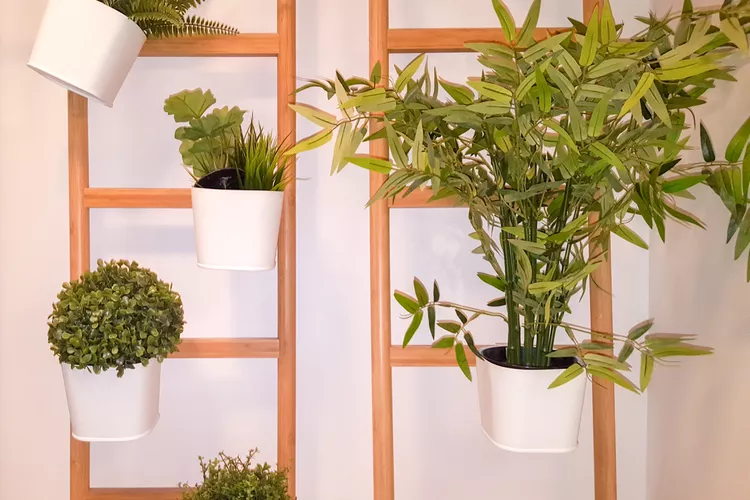
Getty Images/OceanProd
Hang Industrial Planters in Columns
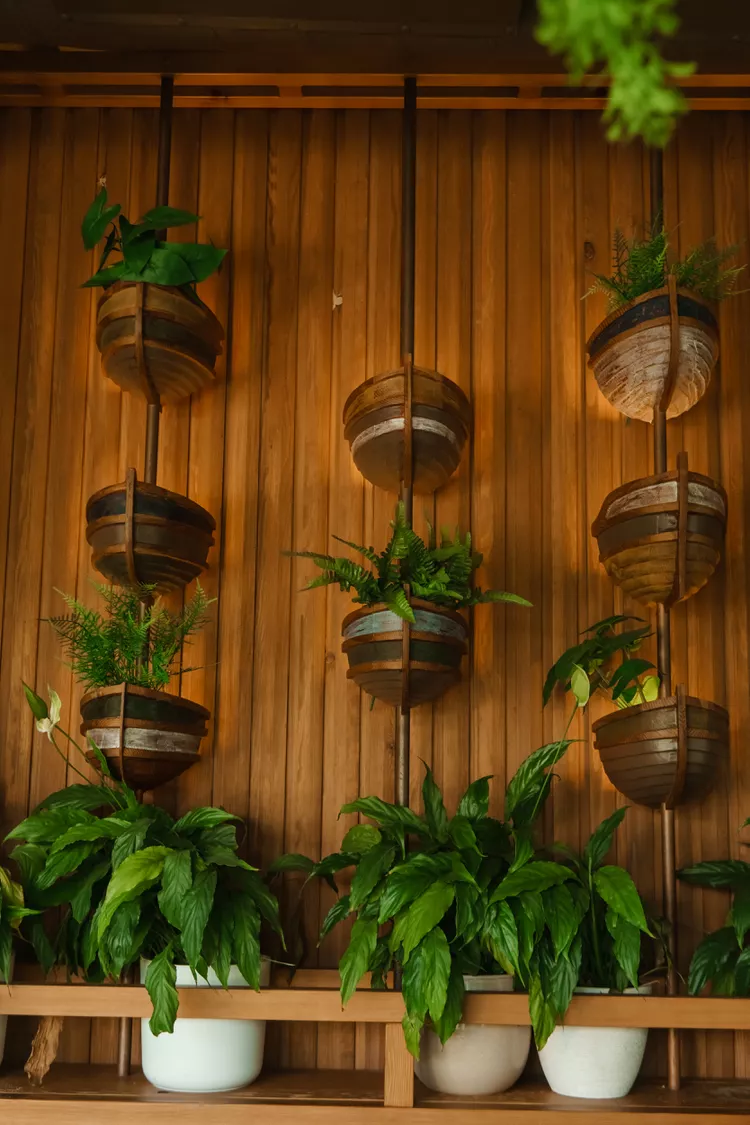
Getty Images/Anna Markina
Sleek industrial planters hung in straight columns are a stylish way to bring a vertical garden into a modern home. These metal-accented planters feel warm against a wood wall, and placing plants randomly throughout the planters, leaving some open, creates a more impactful look.
Play Tetris With Your Plants
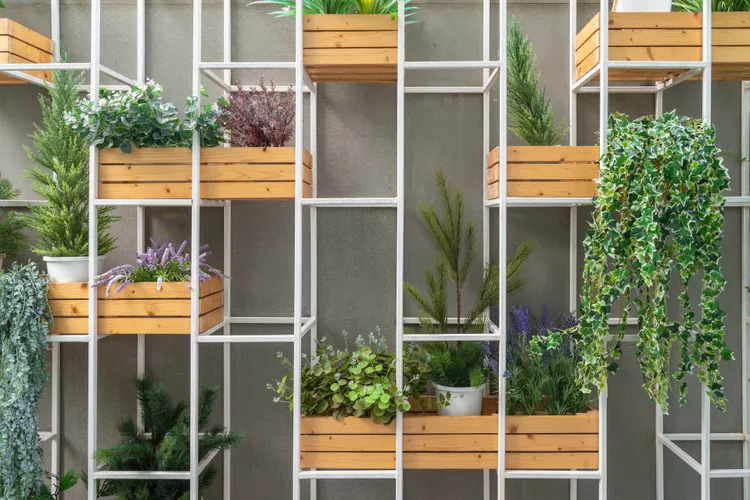
Getty Images/KhongkitWiriyachan
This vertical arrangement of planters feels like a game of Tetris, with the plants randomly arranged throughout the shelves. Or maybe it feels like a cat tower? Either way, it's a visually striking way to fill a wall with greenery.
Paint Old Wood Pallet
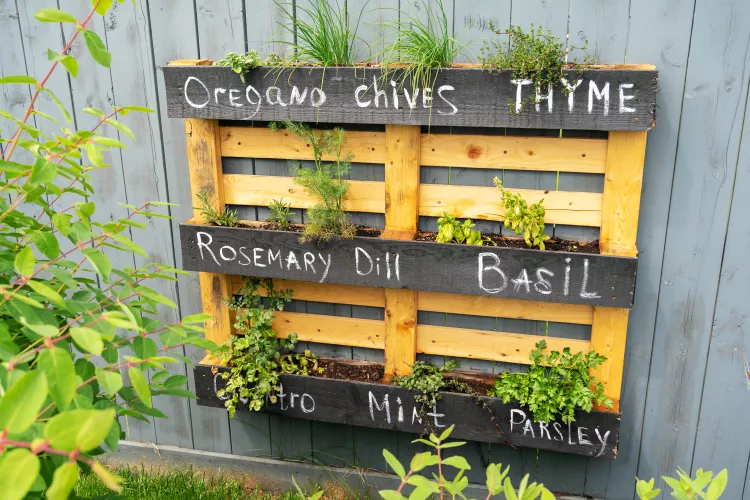
Getty Images/Oksana Aksenova
This DIY pallet herb garden goes the extra mile with chalkboard paint that lets you write what's planted where. As the seasons change and so does your garden, you can wipe off the name and start again.
How to Start Your Vertical Garden for Herbs
A productive herb garden needs careful planning and the right equipment when you transform vertical space. Vertical systems make the most of limited areas and work perfectly for apartment balconies, unlike traditional gardens.
Choosing the right vertical garden system
Your chosen system should fit your space limits and match the herbs you want to grow. Wall-mounted pocket planters excel with shallow-rooted herbs like basil and thyme. Tower systems work better for plants that need deeper roots. The Garden Tower system helps grow 50 plants vertically in just 6 cubic feet of potting soil. This system also eliminates weeding and stops nutrient loss that usually happens in regular gardening.
Light plays a crucial role in system selection. Most herbs need at least 6 hours of direct sunlight each day, so place your vertical garden in the right spot. Systems with integrated LED lighting can help supplement sunlight in areas where natural light is scarce.
Source: AI
Mounting planters on walls or railings
Secure mounting becomes vital, especially on windy days. Command strips offer a reliable solution for rental properties where drilling isn't allowed. These strips can attach lightweight lattice panels to walls. The system's strength increases when you combine them with vinyl siding clips at the edges, supporting a full vertical garden without permanent changes.
Railing installations come with several options:
- Rail planters with built-in attachments that fit standard railing sizes
- Brackets or hooks that hang over railings without requiring installation
- Rope or chain fasteners for heavier containers
Your mounting system must support the combined weight of soil, plants, and water safely. Wall-mounted planters need their weight spread across multiple attachment points rather than hanging from a single hook.
Top Herbs That Work Well in Vertical and Small Gardens
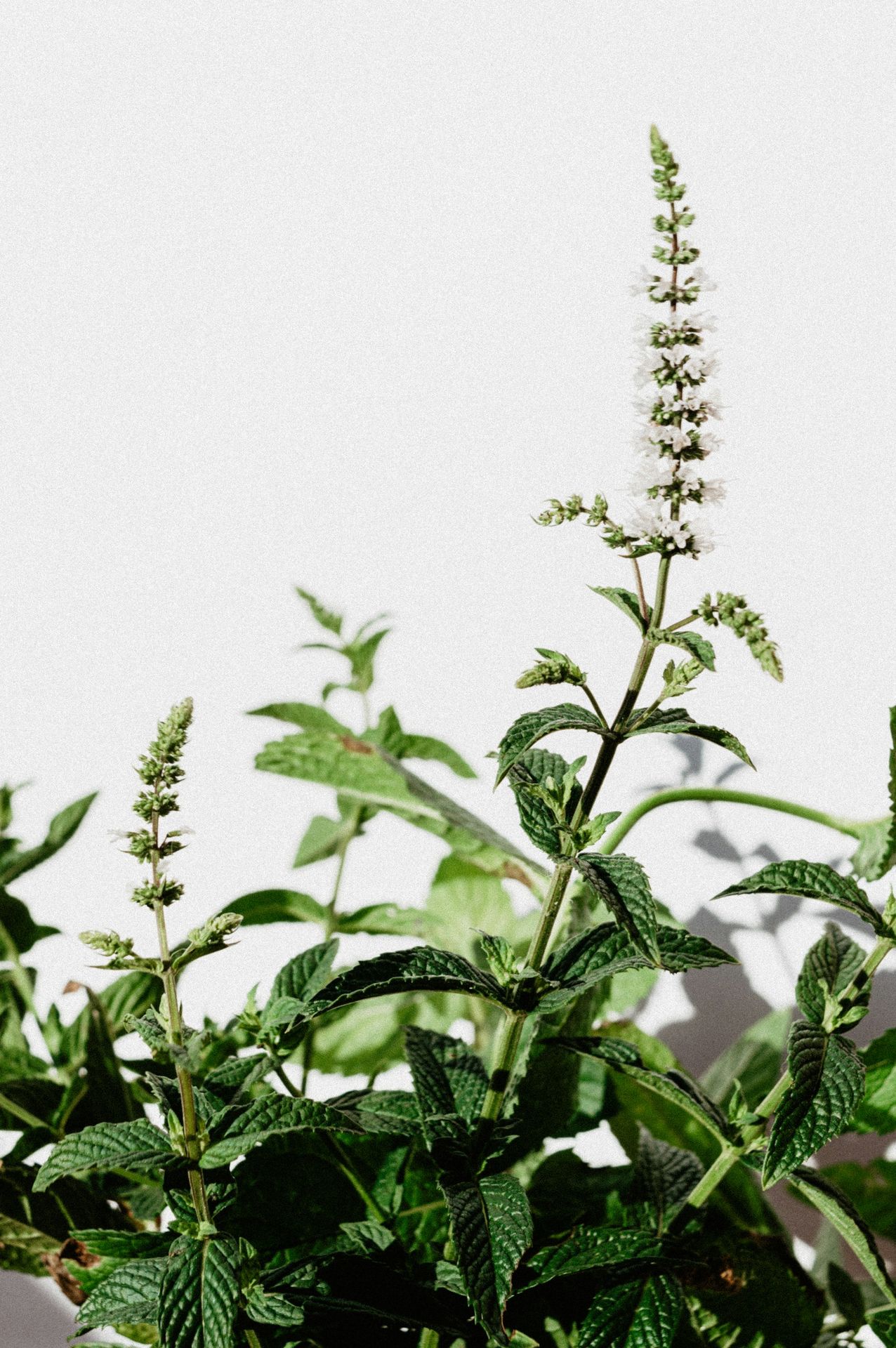
The success of your apartment balcony herb garden depends on choosing the right herbs. Smart variety selection helps you create a productive vertical garden that adds flavor to your cooking and beauty to your outdoor space.
Compact herbs that grow upward
Some herbs naturally grow tall instead of wide, which makes them ideal for vertical gardens. Chives form neat, upright clumps that reach 12-18 inches tall with minimal horizontal spread. Your chives will do best in full sun but can adapt to partial shade on any balcony.
Rosemary grows into an upright, woody perennial that does well in containers. You can train it to grow vertically. This Mediterranean herb loves the sun and needs less water, which suits busy apartment life perfectly. Thyme grows into a compact, bushy plant that fits beautifully along container edges. It cascades slightly without overwhelming its neighbors.
Herbs with shallow roots for small containers
The mint family offers many options - basil, lavender, lemon balm, marjoram, oregano, sage, and thyme. These herbs have shallow roots and grow well in containers just six inches deep. Rail planters and shallow vertical garden pockets work great for them. Other herbs like cilantro, dill, and parsley need deeper soil - at least twelve inches to develop properly.
Combining herbs with similar needs
Your vertical arrangements work best when you group herbs with matching needs together. Mediterranean herbs such as rosemary, oregano, marjoram, lavender, sage, and thyme make perfect companions. They prefer drier soil and full sun, so place them at the top or outer edges of your vertical garden where soil dries quickly.
Basil, cilantro, parsley, and chives love moisture and grow well together in consistently damp areas. The lower sections of your vertical garden suit them best because they benefit from water that trickles down.
A balanced arrangement combines different heights to maximize space and visual appeal. Tall rosemary pairs beautifully with bushy thyme and trailing oregano to create an attractive and functional display.
Tips for Maintaining a Thriving Herb Garden Year-Round
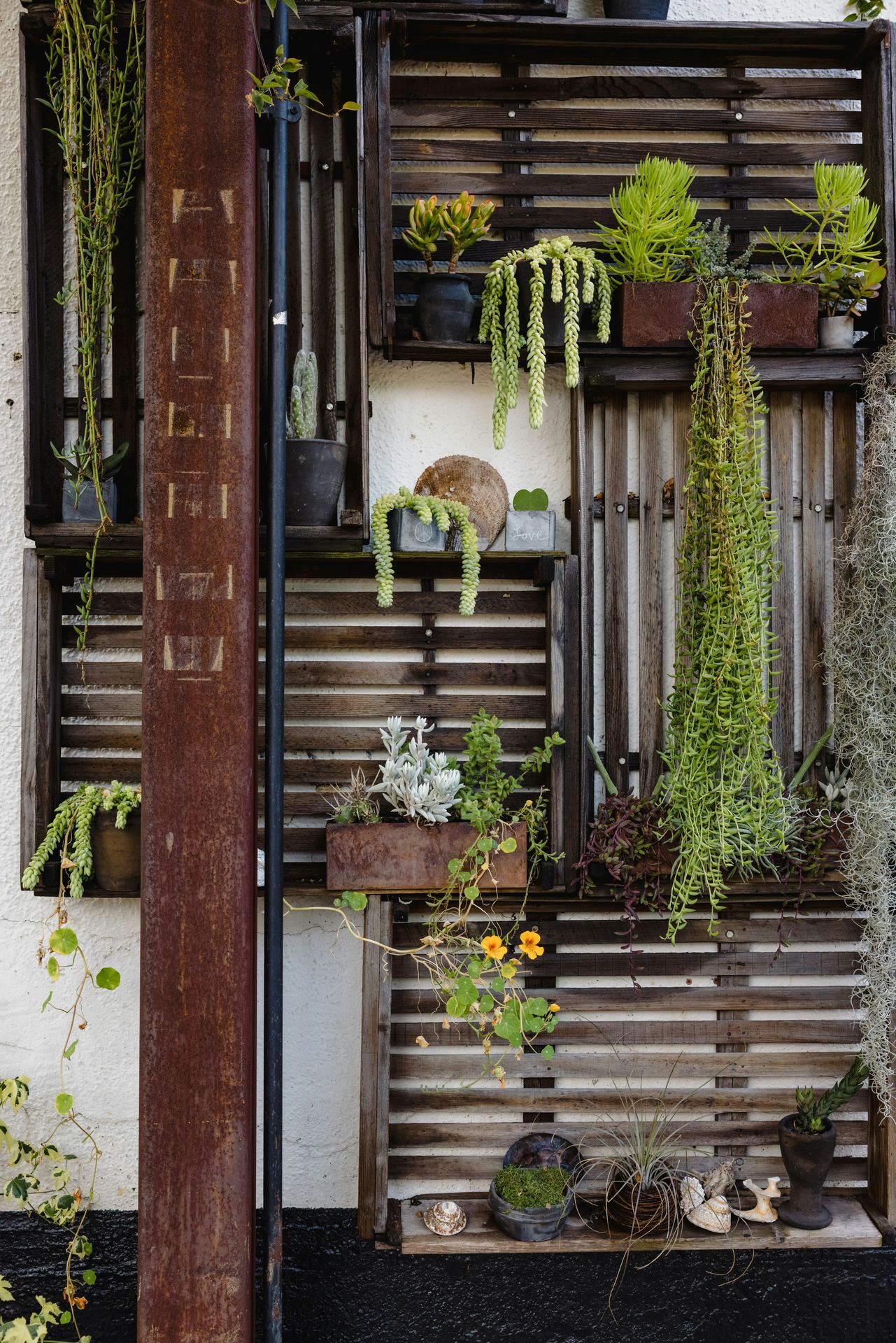
"The garden reconciles human art and wild nature, hard work and deep pleasure, spiritual practice and the material world." — Unknown, Garden philosopher
Your herb garden can thrive all year long. The right maintenance techniques will help balcony herbs flourish in every season, giving you fresh flavors whatever the weather brings.
Seasonal planting and rotation
The end of growing season is perfect to refresh your apartment balcony herb garden. Start by pulling spent herbs and removing leaf debris that could shelter pests. Add 2-3 inches of fresh compost to your containers and rake it in - you won't need to change all the soil. Chives and other perennial herbs naturally come back from their roots, while cilantro tends to reseed itself. Parsley lasts two years before it needs replacement since it's biennial. This simple prep work will give your containers the fertility they need for the next planting cycle.
Indoor transition during colder months
Plants need to move indoors once nighttime temperatures reach the 40s°F (50s°F for basil). Help tender herbs adjust by bringing them in at night first. Gradually increase their indoor time until they stay inside permanently. You could also use an unheated porch as a temporary spot before moving them to your living space.
Hardy herbs like mint, oregano, and thyme can stay outdoors with protection, but Mediterranean varieties need extra attention. Place indoor herbs by south-facing windows that provide 6-8 hours of sunlight. Fluorescent bulbs can help if natural light is limited - two hours of artificial light equals one hour of sunlight. Keep daytime temperatures between 65-70°F and let them drop at least 10° cooler at night.
Using mulch and cloches for protection
A thin 1-1.5" layer of mulch in planters offers several benefits:
- Less water evaporates, which reduces maintenance needs
- Soil temperature stays moderate to prevent root stress
- Weeds can't grow because light can't penetrate
- Soil stays in place during watering
Glass or plastic cloches work great to extend growing seasons. These bell-shaped mini-greenhouses warm soil up to 10°C and speed up germination by 10-14 days. They protect against frost, hail, and heavy rains too. Open cloches on sunny days to prevent overheating, but close them during cold nights to maximize protection."
FAQs
Q1. What are some creative ways to grow herbs on a small apartment balcony?
You can use rail planters, hanging pots, vertical garden systems, repurposed shelves, and even old furniture pieces like ladders or CD racks. These solutions maximize vertical space and allow you to grow a variety of herbs in limited areas.
Q2. Which herbs are best suited for small balcony gardens?
Compact herbs that grow upward, such as chives and rosemary, are excellent choices. Herbs with shallow root systems like basil, lavender, oregano, and thyme also work well in small containers and vertical setups.
Q3. How can I maintain my balcony herb garden during winter?
For tender herbs, gradually transition them indoors when temperatures drop. Hardy herbs can remain outside with protection like mulch and cloches. Ensure indoor herbs receive adequate light, either from south-facing windows or supplemental grow lights.
Q4. What's the best way to water a vertical herb garden?
Consider using self-watering containers or installing a drip irrigation system. Water from the top and position thirstier plants at the bottom to benefit from runoff. Automated timers can help regulate watering frequency based on seasonal needs.
Q5. How can I maximize space in my tiny balcony for an herb garden?
Utilize vertical space by incorporating wall-mounted planters, hanging pots, and tiered structures. Group herbs with similar needs together and use creative solutions like repurposed furniture to create multi-level growing areas. This approach allows you to grow a variety of herbs even in the smallest spaces.
